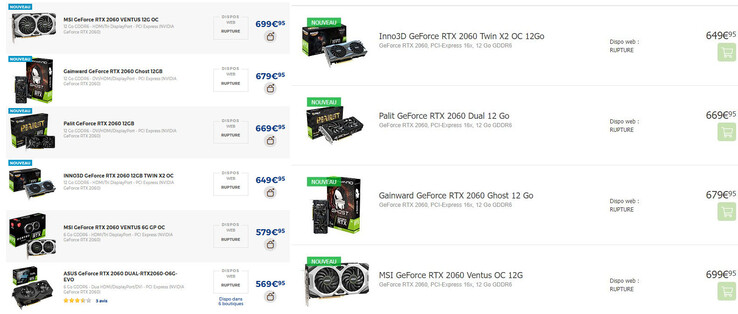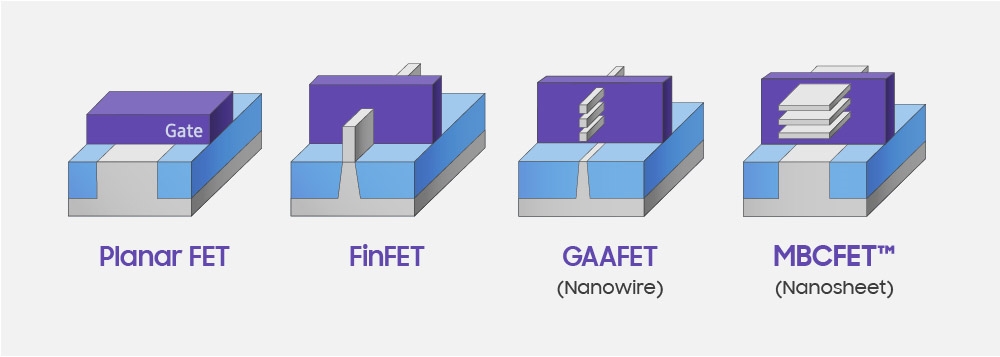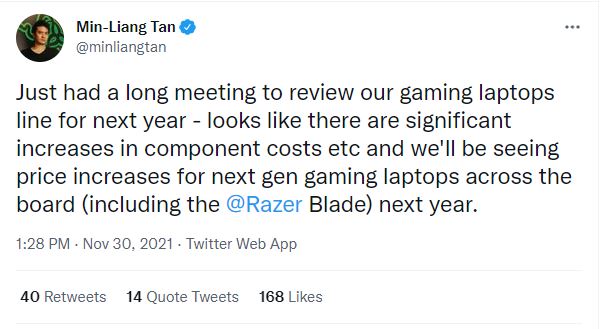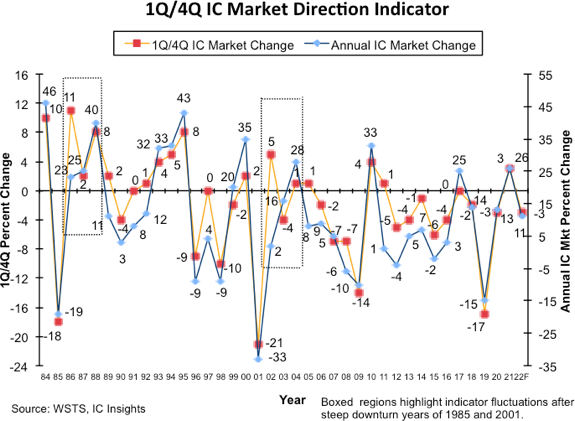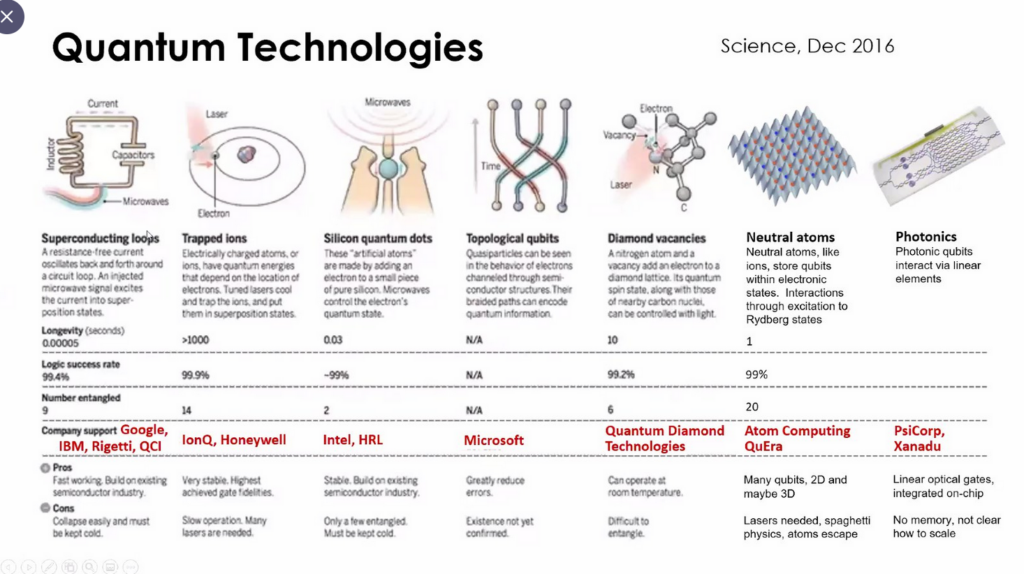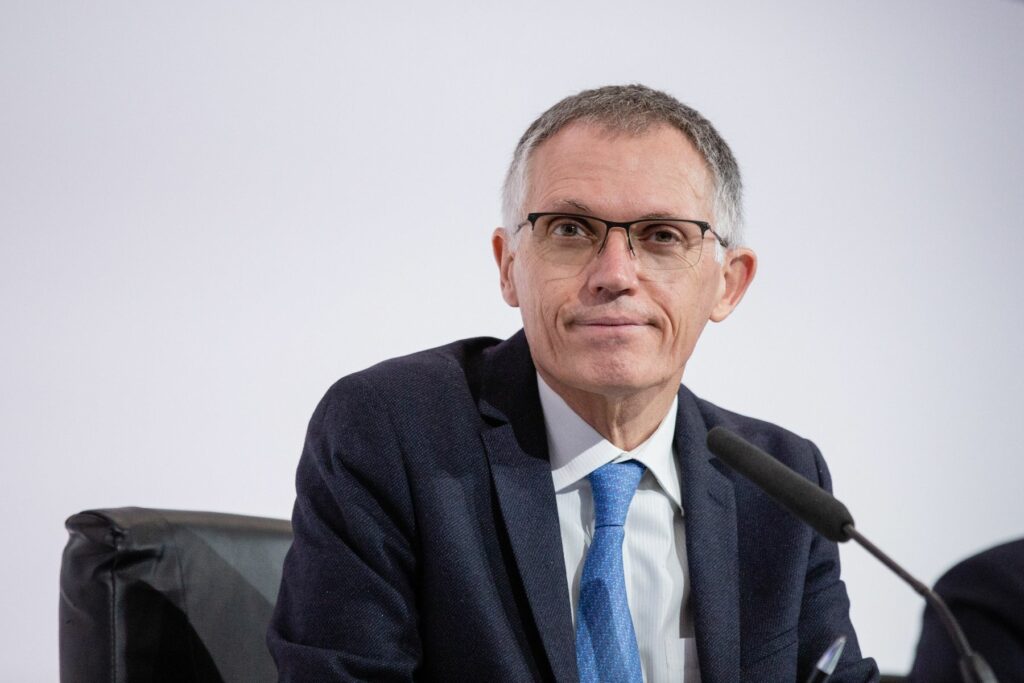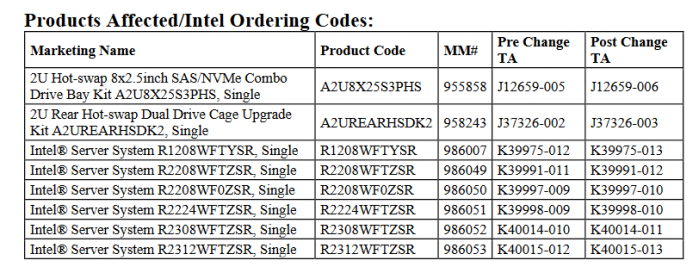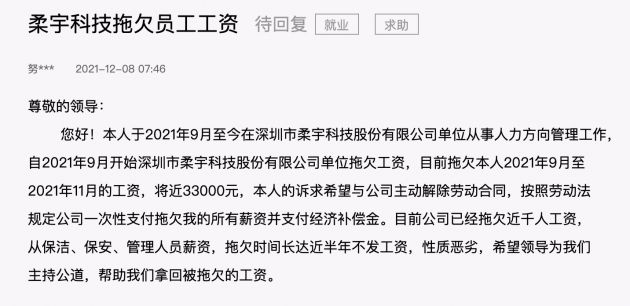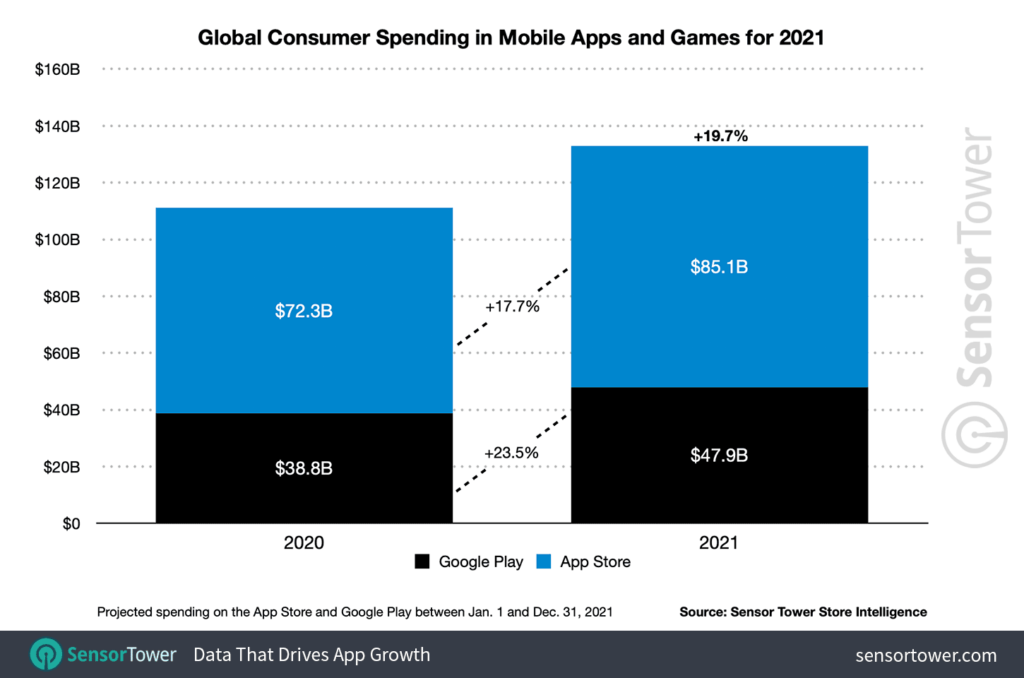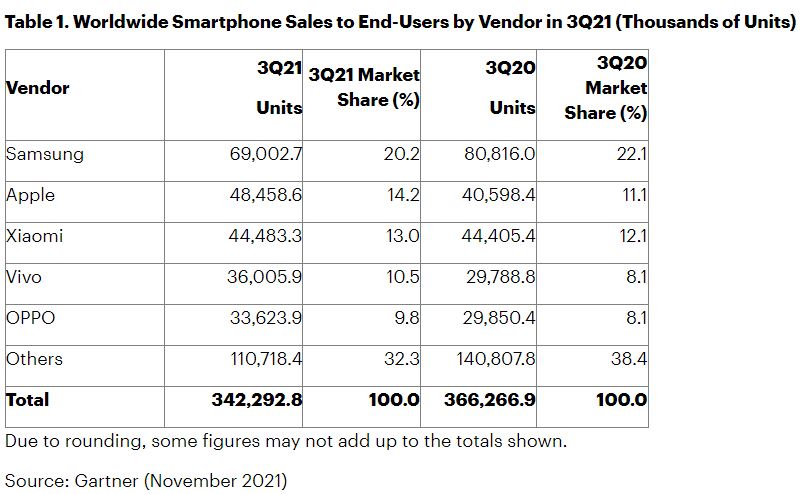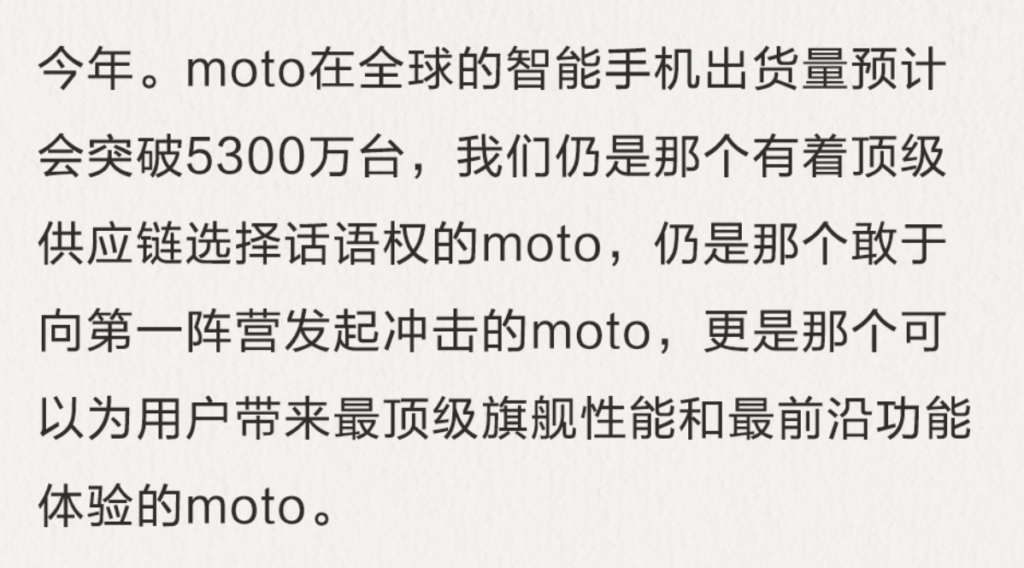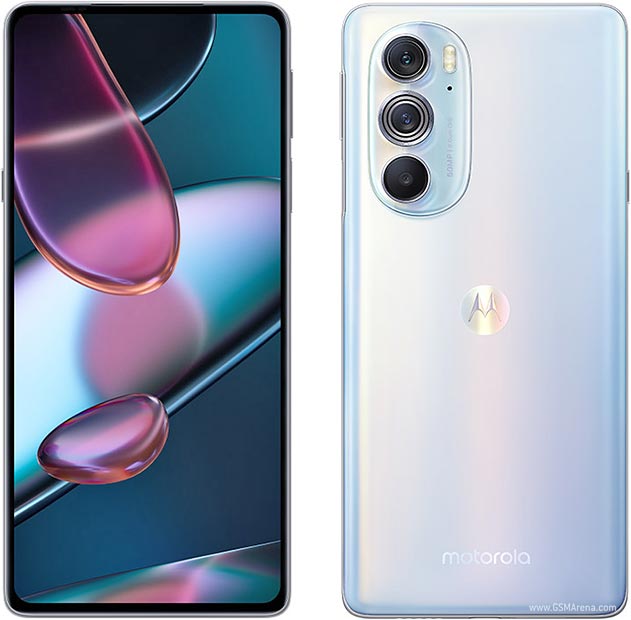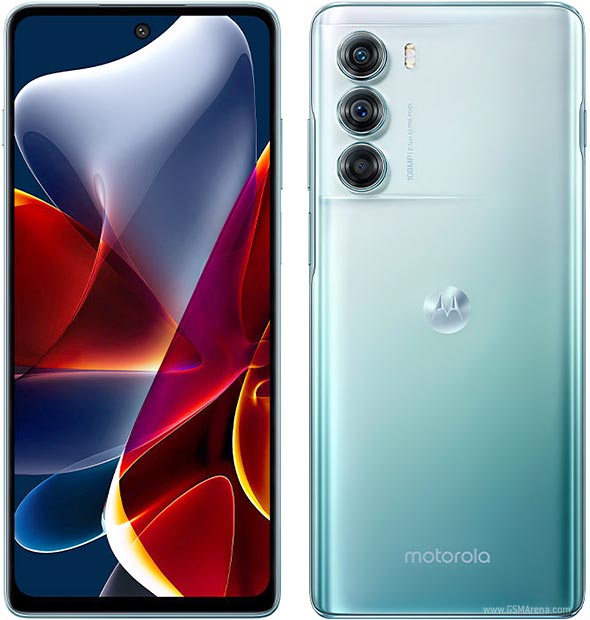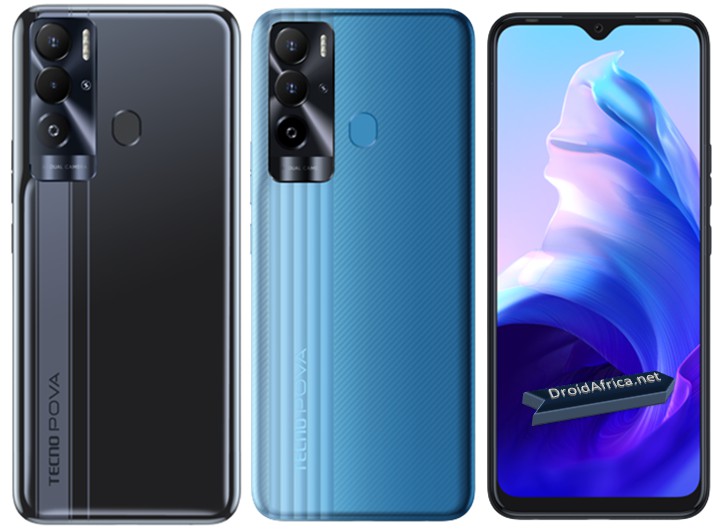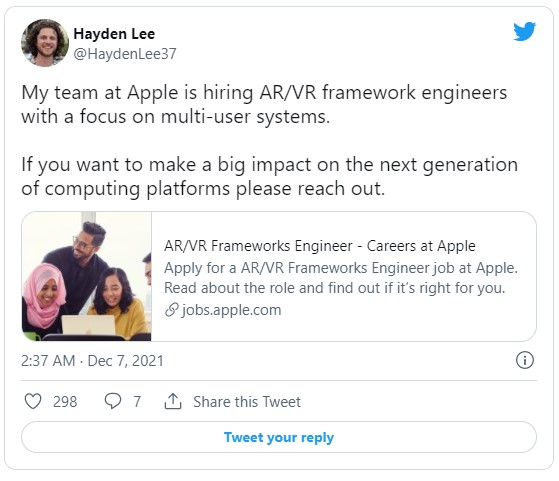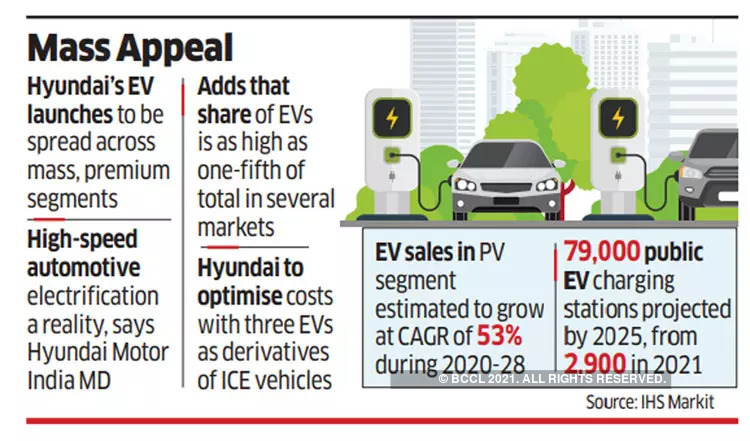
12-10 #DamnCold : 50% of the top 10 automotive OEMs may design their own chips by 2025; Stellanis to work with Hon Hai Technology Group for the design of 4 new families of automotive chips; OPPO is teasing a self-developed retractable rear camera module; etc.
Nividia is rereleasing the RTX 2060 with 12GB of memory and a higher hash rate. Despite a GPU shortage, this card is directed toward the cryptomining market. The RTX 3060 has been fitted with measures to lower the hash rate for mining. If the card detects certain mining algorithms, it will operate at a limited speed. (Digital Trends, Notebook Check, PC Gamer)
Samsung is expected to start producing its first 3nm-based chip design (3GAE) in 1H22, while its second generation of 3nm (3GAP) is expected in 2023. Also, a new addition to its roadmap calls for a 2nm process node (2GAP) in early stages of development with mass production in 2025. The company has said its first 3nm GAA process node that uses MBCFET (Multi-Bridge-Channel Field Effect Transistor) will provide a 35% drop in area with a 30% improvement in performance or 50% lower power consumption when compared to the 5nm process. (CN Beta, Gizmo China, Digitimes, Fierce Electronics)
By 2025, chip shortages and trends such as electrification and autonomy will drive 50% of the top 10 automotive original equipment manufacturers (OEMs) to design their own chips, according to Gartner. As a result, it will give them control over their product roadmap and supply chains. Gartner also predicts that by 2025, the average sale price of new vehicles will exceed USD50,000 in the U.S. and Germany, leading to greater repair and upfit of older vehicles. (CN Beta, Gartner)
Razer’s CEO Min-Liang Tan has tweeted a warning that prices of gaming laptops on the lineup for release in 2022 will surge amidst rising costs. He is also encouraging intending buyers to purchase their choice gaming laptops before the holiday season and festivities. (Gizmo China, Dot Esports, TechTimes, Twitter, ZOL)
According to IC Insights, in 1984-2020, the average seasonal sequential decline in the 1Q/4Q IC market was 2%. In 1Q20, the IC market was down 3% compared to 4Q19, slightly below the historical average. The 1Q21/4Q20 IC market change of 3% was much better than the 1Q20/4Q19 IC market change of -3%. As a result, IC Insights believes that the full-year annual growth rate for the 2021 IC market will likely be much better (26%) than the 13% increase the IC market registered in 2020. Conversely, since the 1Q22 / 4Q21 IC market is forecast to be down 3%, the IC market direction indicator depicts the 2022 IC market growing much less than it did in 2021 (11% in 2022 versus 26% in 2021). If 1Q22 / 4Q21 IC market growth surprises to the upside of -3%, an upgrade to their current 11% forecast for 2022 may be warranted. (CN Beta, IC Insights)
IonQ, a leader in quantum computing, has announced that it plans to use barium ions as qubits in its systems, bringing about a wave of advantages it believes will enable advanced quantum computing architectures. IonQ is the first quantum computing company able to harness more than one atomic species as qubits, having built its systems to date with ytterbium ions. Now, IonQ plans to use barium ions to build systems that are designed to be faster, more powerful, more easily interconnected, and that feature more uptime for customers. (CN Beta, Yahoo, HPC Wire)
Stellantis has unveiled a nonbinding accord with Foxconn owner Hon Hai Technology Group for the design of 4 new families of automotive chips. By sidestepping traditional partsmakers and dealing directly with the chip manufacturer, the company CEO Carlos Tavares has said the pact will cover more than 80% of the automaker’s needs. The preliminary agreement with Foxconn calls for the chips to be available for use in vehicles in 2024, helping to stabilize the supply chain. (CN Beta, Bloomberg, Auto News)
Intel has discontinued their Comet Lake-U, Ice Lake-U, and Lakefield laptop CPUs earlier 2021. Now, Intel is initiating their End-Of-Life (EOL) plan for the higher-end mobile 14nm Gen Core CPUs, which happens to be the remainder of the Comet Lake series. Customers will be able to order the processors until 1H22. It is speculated that it is due to the fact of two 10nm processors by Intel are still on the market being more favorable than the 14nm chipset. (CN Beta, Tom’s Hardware, WCCFTech)
Samsung believes the chip shortage will continue to affect its smartphone operation up to 2H22. Supply of AP and RF chips will be tight up to 2H22. Samsung Mobile also believes the shortage in production capacities by foundry companies (companies that contract manufactures chips designed by their customers) to continue. Fabless companies (companies that design chips but do not manufacture them, such as Qualcomm) will therefore focus on supplying products with high margins first. Samsung Mobile will seek annual contracts to secure production capacities from foundries beforehand to minimize the impact of these trends. (Gizmo China, The Elec)
Royole has reportedly delayed paying salaries to employees for months after the money-losing company ditched its initial public offering (IPO) plan on Shanghai’s Nasdaq-like STAR Market in Feb 2021. Royole has responded that that there are compensation plans for wages arrears. The company is operating normally. (CN Beta, Caixin, Pandaily, Nikkei)
OPPO is teasing a self-developed retractable rear camera module. The actual sensor is a 1/1.56” imager with a 50mm equivalent lens with f/2.4 aperture which fits the Sony IMX766 profile. (CN Beta, Sohu, IT Home, GSM Arena, Gizmo China)
Dynamic induction charging for electric cars is called the “Arena of the Future”. The project was born from the collaboration between Stellantis and Brebemi who together inaugurated the “Arena Del Futuro” circuit built by the company that manages the A35 motorway. With 1,050m long, the circuit is located in a private area of the motorway, near the Chiari Ovest exit, and is powered by an electrical power of 1MW. Thanks to Dynamic Wireless Power Transfer (DWPT), electric vehicles can recharge in mode wireless traveling on wired lanes with an innovative loop system positioned under the asphalt. (CN Beta, Italy 24 News, Stellanis)
Toyota is doubling down on its electric vehicle ambitions with the building of a USD1.3B battery production plant in North Carolina, its first such facility in the U.S. Upon completion in 2025, the site will feature 4 production lines, with each one able to deliver enough lithium-ion batteries for 200,000 electric vehicles that year. Moving forward, Toyota said it wants to expand the facility to at least 6 production lines for a combined total of up to 1.2M vehicles per year. (Digital Trends, Yahoo, Bloomberg)
After the boom in adoption and spending for both mobile games and non-game apps in 2020, market trends began normalizing in 2021 as worldwide consumer spending is projected to reach approximately USD133B on in-app purchases, premium apps, and subscriptions across the App Store and Google Play, according to Sensor Tower Store Intelligence. This represents 19.7% YoY growth from USD111.1B in 2020, nearly mirroring the 21% YoY growth consumer spending experienced in 2019. Globally, consumer spending on the App Store will reach USD85.1B, up 17.7% YoY from USD72.3B in 2020. Although users have spent less on Google Play, that platform will see more YoY growth, climbing 23.5% to USD47.9B from USD38.8B. (Apple Insider, Sensor Tower)
Apple is allegedly forced to cease iPhone and iPad production for several days when it was supposed to kick into high gear. Apple has been facing global supply chain shortages as other companies despite its enormous purchasing power. Apple has previously lowered its iPhone 13 production goals for 2021 and had to cut back on the iPad’s production to allocate more parts for its mobile flagship devices. (Engadget, Asia Nikkei)
Global smartphone sales to end-users declined 6.8% in 3Q21, compared to the same time period in 2020, according to Gartner. Component shortages disrupted production schedules, leading to lower inventory and delayed product availability, which eventually impacted sales to end-users. Apple reclaimed the No.2 position in sales to end-users and Xiaomi moved back to No.3 in 3Q21. Samsung maintained its overall lead in smartphone sales, though its market share declined 1.9% YoY. (CN Beta, Gartner)
Lenovo’s General Manager, Chen Jin has revealed that Motorola’s global smartphone shipments will cross 53M units in 2021. He has stated the Moto brand still is a major player in the market with a robust supply chain that enables it offer top flagship grade premium handsets that feature cutting edge technology. (Gizmo China, Weibo, Sohu, IT Home)
Motorola Edge X30 debuts in China – 6.7” 1080×2400 FHD+ OLED 144Hz, Qualcomm Snapdragon 8 Gen 1, rear tri 50MP OIS-50MP ultrawide-2MP depth + front 60MP CuD, 8+128 / 8+256 / 12+256GB, Android 12.0, side fingerprint, 5000mAh 68W, CNY3,199 (USD501) / CNY3,399 (USD532) / CNY3,599 (USD564). (GSM Arena, 91Mobiles)
Motorola Edge S30 debuts in China – 6.8” 1080×2460 HiD LCD 144Hz, Qualcomm Snapdragon 888+ 5G, rear tri 108MP-13MP ultrawide-2MP depth + front 16MP, 6+128 / 12+256GB, Android 11.0, side fingerprint, 5000mAh 33W, CNY1,999 (USD313) / CNY2,599 (USD407). (GSM Arena, GizChina)
Tecno Pavo Neo is launched in Nigeria – 6.82” 720×1640 HD+ v-notch, MediaTek MT6762V Helio P22, rear dual 13MP-2MP depth + front 8MP, 4+64GB, Android 11.0, rear fingerprint, 6000mAh 18W, NGN72,500 (USD177). (Gizmo China, Tecno)
vivo Y55s 5G is launched in China – 6.58” 1080×2408 FHD+ v-notch, MediaTek Dimensity 700 5G, rear dual 50MP-2MP macro + front 8MP, 8+128GB, Android 11.0, side fingerprint, 6000mAh 18W, CNY1,699 (USD268). (Gizmo China, vivo, GSM Arena)
Google is planning to bring Android games to Windows PCs in 2022. A Google Play Games app will be available in 2022, built by Google to allow games from Google Play to run on Windows laptops, tablets, and PCs. Google spokesperson Alex Garcia-Kummert has revealed that the company has built this app on its own. (CN Beta, The Verge, Windows Central)
According to TF Securities analyst Ming-Chi Kuo, Apple has begun planning for the second-generation AR/MR headset, and the shipment schedule will likely be in 2H24. Improvements for the second generation include the lighter weight, form factor design, battery system, and processor compared to the first model, which will go to mass production in late 4Q22. It will weigh around 300 to 400g and that it will be able to “seamlessly switch between AR and VR to provide an innovative headset experience”. He predicts that the sales of Apple’s first-generation headsets will be between 2.5M-3.5M units, while the second-generation sales are expected to reach 10M. (Apple Insider, CN Beta, TF Securities, MacRumors)
Apple is looking to create an “entirely new application paradigm” for augmented and virtual reality (AR / VR) according to a new job listing, highlighting the company’s growing ambitions in the AR and VR space as it ramps up the development of its next-generation products. Apple is expected to release its first AR-focused device in 2022. (MacRumors, Upload VR, Apple Insider)
Samsung Electronics has reportedly started an augmented reality (AR) HoloLens project with Microsoft. The project will last until 2023, with a commercial project resulting from it expected to be unveiled in 2024. In 2019 and Nov 2021, Samsung has invested in US AR firm DigiLens, which is known for its waveguide technology used in AR display devices. Waveguide technology is used to bend the light from the video playing on a display to the glasses, which is transparent in AR display devices as users need to see the real surrounding around them simultaneously with the virtual items on display. According to analyst firm TrendForce, 200,000 units of HoloLens 2 were sold in 2021. (Pocket-Lint, The Elec)
Hyundai Motor will invest INR4,000 crore (USD530M) to launch 6 electric vehicles in India by 2028. Hyundai Motor India Marketing Director, Taren Garg, said that Hyundai Motor will launch its first electric vehicle (EV) in 2022. Subsequently, the company will successively launch economical and high-end electric vehicles including sport utility vehicles (SUVs) and sedans. In India, electric vehicles account for less than 1% of total car sales, but the government aims to reach 30% by 2030. (GizChina, Business Today, India Times)
Indian ride-hailing giant Ola has raised USD139M at a valuation of about USD7.3B, it said in a filing, ahead of its plans to file for an initial public offering early 2022. The firm, which unveiled its electric scooters in Aug 2021, has delayed the delivery of the vehicle several times citing chip shortage. (TechCrunch, Entrakr)
Stellantis has laid out an ambitious plan to generate USD22.5B annually from software in its vehicles that can sell passengers and drivers products and subscriptions. The target is in line with goals from its competitors — all of which are seeking ways to make revenue beyond selling, repairing and financing vehicles. Stellantis, the global automaker that merged Fiat Chrsyler and French PSA Group, has said it will invest more than USD33.7B through 2025 into software and electrification. (TechCrunch, CNBC, Autobala)
Chinese artificial intelligence startup SenseTime Group is looking to raise up to USD767M in its Hong Kong initial public offering (IPO). The company plans to use the majority of the IPO funds for research and development of its main AI technologies. SenseTime provides technology-based applications, including facial recognition, video analysing and autonomous driving. (Laoyaoba, Reuters, TechCrunch)
WeLab, a Hong Kong-based fintech unicorn, has announced its acquisition of Bank Jasa Jakarta (BJJ), an Indonesian commercial bank. With the deal, WeLab is planning to launch a digital bank to capture the country’s enormous unbanked population in 2H22. The consortium, called WeLab Sky, will acquire the stakes of BJJ to become its sole controlling shareholder. (TechCrunch, CN Beta)
WhatsApp has launched a new pilot that lets a “limited number” of people in the US send and receive money from within a chat using cryptocurrency. The feature is powered by Novi, Meta’s digital wallet that has launched as a pilot, with payments made using Pax Dollars (USDP), a stablecoin pegged to the US dollar issued by Paxos. The news was announced by Novi’s incoming head Stephane Kasriel and WhatsApp’s Will Cathcart. (The Verge, Novi, TechCrunch)

